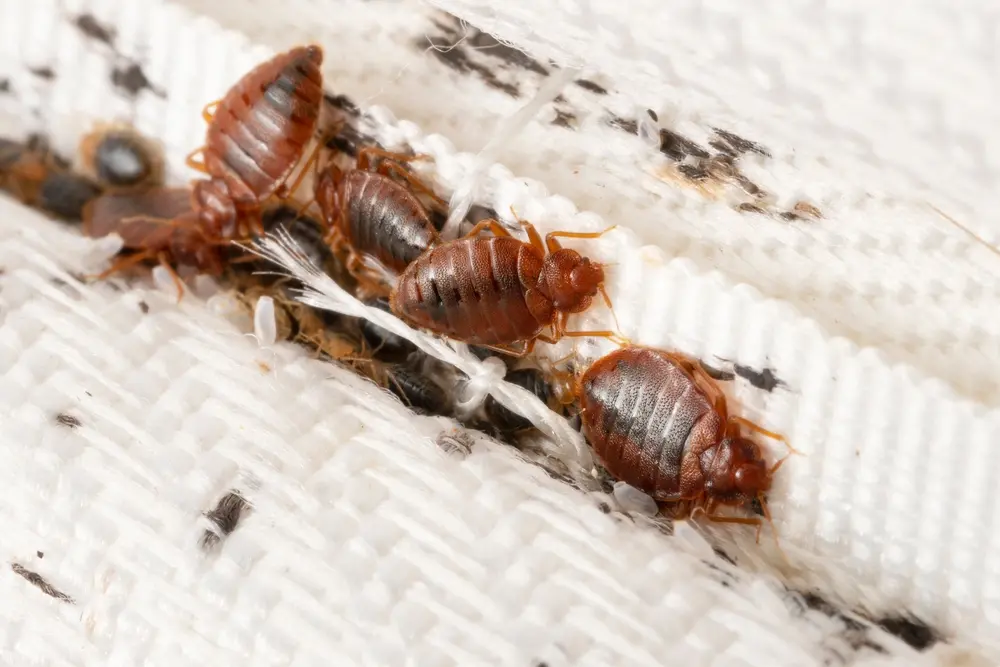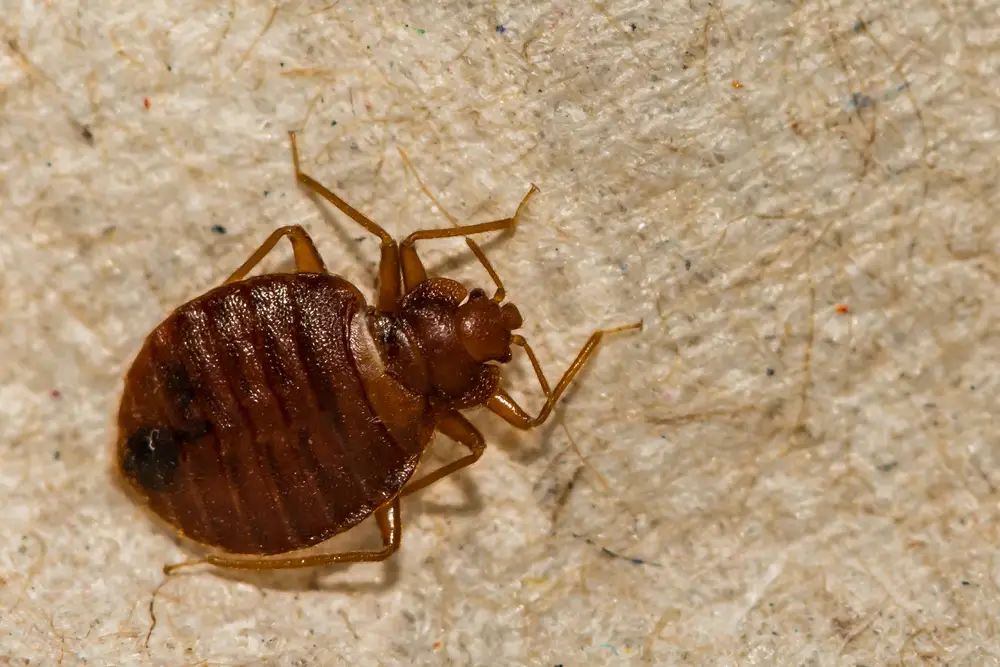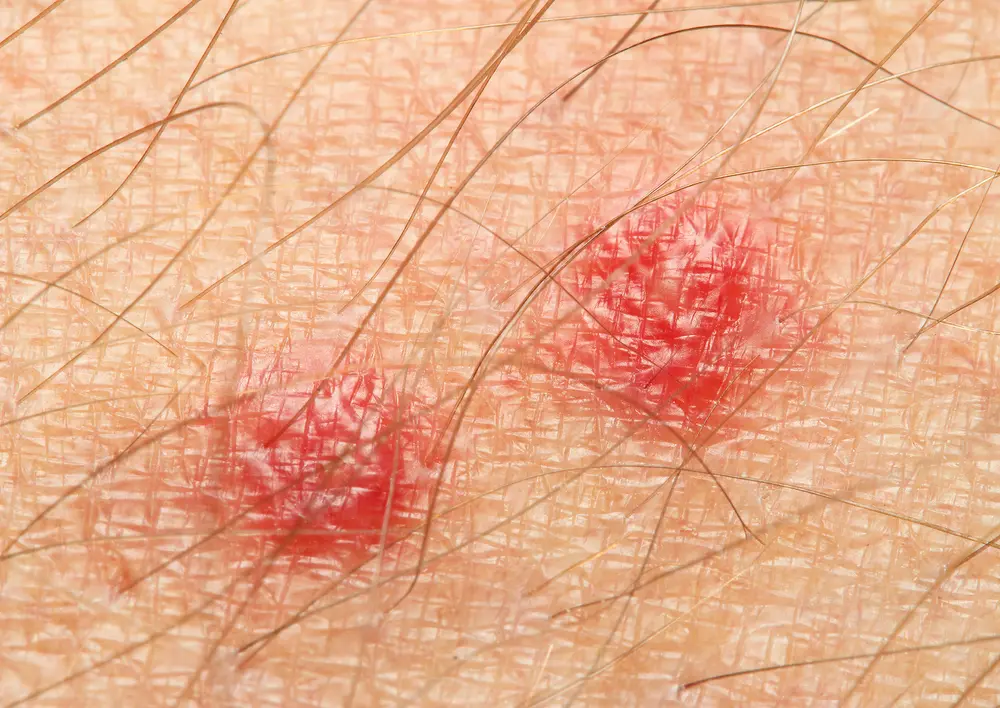Bedbug pictures, causes, damages, and prevention tips

Are you waking up with itchy bites or suspicious red spots on your body? You might have a bedbug problem. These tiny, blood-sucking pests are a nightmare for homeowners and hotel guests alike. Understanding bedbugs’ causes, damages, and prevention tips can help combat these unwelcome intruders.
Understanding bedbugs and their common habitats
Bedbugs are small, brownish insects that feed on the blood of humans and animals. They are typically found in mattresses, box springs, bed frames, and other areas near sleeping quarters. Despite their name, bedbugs can infest any place where humans are present, including hotels, movie theaters, and public transportation.
Bedbug Size
measuring roughly 5-7 millimeters or – 1/4 inch long
Adult bedbugs are about the size of an apple seed, while nymphs (young bedbugs) are much smaller and translucent. Their small size and ability to hide in cracks and crevices make them difficult to detect and eliminate.
Signs of a bedbug infestation and common areas affected
Signs of a bedbug infestation include:
- There are small blood stains on the bedding.
- Dark spots (bedbug feces) on mattresses.
- A sweet, musty odor.
Bedbugs are mainly active at night and are attracted to the warmth and carbon dioxide emitted by sleeping humans. The arms, legs, neck, and face are common areas affected by bedbug bites.
To prevent a bedbug infestation, it’s essential to regularly inspect and clean your bedding, vacuum regularly, and seal any cracks or crevices in your home. Professional pest control should be contacted to ensure proper eradication if an infestation is suspected.
Bedbug Pictures
Close-up images of bedbugs and their identifying characteristics

Bedbugs are small, brownish insects that feed on the blood of animals and humans. Here are some close-up images of bedbugs and the features that can help you identify them:
- Oval-shaped body: Bedbugs have a flat, oval-shaped body about the size of an apple seed.
- Reddish-brown color: Adult bedbugs are reddish-brown in color, while the younger ones appear pale or translucent.
- Antennae and mouthparts: They have short antennae and well-developed mouthparts for piercing the skin and sucking blood.
- Wingless: Bedbugs do not have wings, but they can crawl quickly over floors, walls, and ceilings.
Pictures of bedbug bites and their effects on human skin
Bedbug bites can cause varying reactions in different individuals. Below are pictures that show these bites and the effects they can have on the human skin:

- Red, itchy bumps: Bedbug bites often appear as small, red, itchy spots or welts on the skin. They may be arranged in a line or cluster, often in exposed areas like the face, neck, arms, and legs.
- Swelling and inflammation: In some cases, the bites may cause swelling and inflammation around the affected area.
- Scratching and secondary infections: Excessive scratching of the bites can lead to skin breakage, which increases the risk of secondary infections.
Regularly inspect and clean your mattress, bedding, and upholstered furniture to prevent bedbug infestations. Additionally, avoid bringing used furniture or items of unknown origin into your home. If you suspect a bedbug infestation, it is best to contact a professional pest control service for effective treatment.
Causes of Bedbug Infestations
Common ways bedbugs enter a home or space
Bedbugs are not picky when it comes to finding a new home. They can enter your space through various means, such as:
- Travel: Bedbugs can hitch a ride on your luggage, clothing, or belongings when you stay in infested hotels, motels, or rental properties.
- Used furniture: Buying secondhand furniture without proper inspection could introduce bedbugs into your home.
- Visitors: If you have guests who unknowingly have bedbugs in their luggage or clothing, they can leave behind these unwanted pests in your space.
Factors that contribute to the spread and growth of bedbug populations
Several factors play a role in the spread and growth of bedbug populations, including:
- Increased travel: As travel becomes more accessible and frequent, the risk of picking up bedbugs and bringing them home increases.
- Lack of public awareness: Many people are unaware of how to identify and prevent bedbug infestations, which can allow these pests to spread unchecked.
- Delayed treatment: Ignoring or delaying professional therapy for a bedbug infestation can lead to the rapid growth of their populations and make eradication more challenging.
- Poor hygiene: Contrary to popular belief, bedbugs do not thrive in dirty environments. Good cleanliness practices can prevent bedbug infestations and hinder their growth.
By understanding the common causes of bedbug infestations, you can take proactive measures to prevent them and protect your home from these unwelcome pests.
Damages Caused by Bedbugs
Health risks associated with bedbug infestations
Bedbugs are not just a nuisance; they can pose serious health risks. Their bites can cause itching, redness, and swelling. In some cases, people may experience an allergic reaction. Additionally, bedbugs are known to carry and transmit diseases such as HIV, Hepatitis B, and Chagas disease, although the risk of transmission is low.
Damage to furniture, fabrics, and personal belongings
Another significant concern when dealing with bedbugs is the damage they can cause to furniture, fabrics, and personal belongings. These pests can leave behind stains and unpleasant odors on mattresses, upholstery, and clothing. They can also infest electronics and hide in cracks and crevices, making it difficult to eradicate them. Over time, this can lead to costly replacements and repairs.
It is important to take proactive measures to prevent further damage and infestations. Regularly inspect your home for signs of bedbugs, such as bloodstains on sheets, dark spots on furniture, and a musty odor. Additionally, keeping your living space clean and clutter-free can help eliminate hiding spots for bedbugs.
Overall, promptly addressing a bedbug infestation is crucial to preventing health risks and property damage. Seeking professional pest control services may be necessary to effectively eradicate these pests and ensure a safe and comfortable living environment.
Prevention Tips
Identifying and sealing potential entry points for bedbugs
- Inspect and seal cracks and crevices: Regularly check your home for any damages, crevices, or gaps where bedbugs could enter. Seal them with caulk or any suitable sealant.
- Secure entry points: Install door sweeps and weather stripping to seal gaps at the bottom of doors and windows. Helps prevent bedbugs from entering your home.
- Be cautious with used furniture: Inspect secondhand furniture thoroughly before bringing it into your home. Bedbugs can hide in seams, cracks, and joints.
Tips for cleaning and maintaining a bedbug-free environment
- Vacuum regularly: Vacuum your home frequently, paying close attention to areas where bedbugs can hide, such as mattresses, box springs, bed frames, and furniture.
- Wash and dry bedding on high heat: Wash your bedding, including sheets, pillowcases, and blankets, in hot water and dry them on high heat to kill any potential bedbugs.
- Reduce clutter: Declutter your living spaces as much as possible. Bedbugs love chaos, as it provides them with more hiding places.
Remember, prevention is key when it comes to bedbugs. Taking proactive measures to prevent infestations can save you time, money, and stress. If you suspect a bedbug infestation, it is recommended to contact a professional pest control company for assistance.
Bedbug Extermination Methods
How long can a bedbug live without feeding?
Bedbugs are resilient pests that can survive several months without a blood meal. In ideal conditions, an adult bedbug can live up to 5-6 months without feeding. However, they prefer to feed every 5-10 days and can become more active and reproduce faster when well-nourished.
What do bedbug eggs look like?
Bedbug eggs are tiny, about the size of a pinhead, and are often whitish or transparent in color. They are laid in clusters and can be found in crevices, cracks, and other hiding spots near sleeping areas. Bedbug eggs are resistant to many common pesticides, making it crucial to eliminate both the eggs and the adult bugs for effective eradication.
To prevent a bedbug infestation, here are some tips:
- Inspect Your Sleeping Area: Regularly check your bed, mattress, and sheets for any signs of bedbugs, such as dark stains, shed skins, or live bugs.
- Maintain Cleanliness: Reduce clutter in your living space to minimize hiding spots for bedbugs. Vacuum and clean regularly to remove any potential food sources for the pests.
- Seal Entry Points: Seal cracks and crevices in walls, furniture, and baseboards to prevent bedbugs from entering your home.
- Be Cautious When Traveling: Inspect hotel rooms and other accommodations for signs of bedbugs before settling in. Keep your luggage elevated and away from the bed.
Remember, if you suspect a bedbug infestation in your home, it’s best to seek professional help from a licensed pest control company to safely and effectively eliminate these pests.